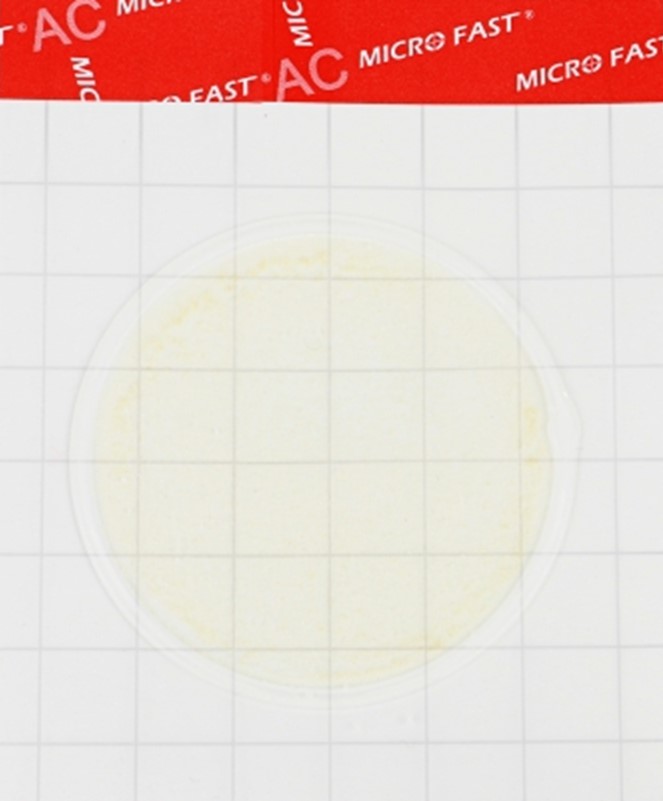Aspergillosis: A Threat to Poultry Farming

 PIONEER MEIZHENG BIO-TECH (5 in1) JC1165 / Rapid tests for the determination of the residual amount of halofuginone, flavomycin, novobiocin, flunixin, dexamethasone / prednisolone in milk, whey
PIONEER MEIZHENG BIO-TECH (5 in1) JC1165 / Rapid tests for the determination of the residual amount of halofuginone, flavomycin, novobiocin, flunixin, dexamethasone / prednisolone in milk, whey Rapid tests for fluoroquinolone, erythromycin, lincomycin, tillosin and tilmycosin residues in milk, whey
Rapid tests for fluoroquinolone, erythromycin, lincomycin, tillosin and tilmycosin residues in milk, whey
Aspergillosis is a serious disease caused by fungi of the genus Aspergillus, which can have a devastating impact on the HEALTH of domestic and wild birds. In August 2024 , specialists from the Saratov Laboratory conducted an inspection of poultry farms in the Saratov region to identify possible cases of this disease. The study covered 25 samples of material, and fortunately, the pathogen was not detected. However, this does not exclude the need for careful monitoring of the state of poultry farming, since aspergillosis can pose a real threat.
How does infection occur?
The Aspergillus fungus can enter the body of birds through the respiratory tract or through the eggshell. The infection can develop both in and outside the incubator. In incubators, where high temperatures and humidity create favorable conditions for the reproduction of the fungus, eggs can "explode" due to the accumulation of gases and pressure caused by the growth of the pathogen inside. This leads to the release of spores that contaminate the incubator and the environment. Spores can be spread through ventilation systems, which creates a risk of mass infection of chickens, especially those under three weeks of age.
Symptoms and diagnosis
Aspergillosis can manifest itself in acute or chronic forms. Diseased birds show symptoms such as shortness of breath, difficulty breathing, wheezing and cyanosis of the skin. In the acute stage of the disease, serous-fibrinous pneumonia may develop, which requires immediate intervention by veterinarians.
Diagnosis of aspergillosis is based on clinical manifestations, pathological signs and laboratory tests. it is important to consider that early diagnosis and treatment can significantly reduce the mortality rate among birds and prevent outbreaks of the disease.
Prevention
To minimize the risk of aspergillosis, several key measures must be taken:
1. Humidity control: maintaining optimal humidity levels in the rooms where birds are kept can significantly reduce the risk of infection.
2. Cleanliness and disinfection: Regular cleaning and disinfection of incubators, as well as feeders and waterers, will help prevent the accumulation of spores.
3. Feed quality: Using quality feed and bedding, as well as storing them in a dry and clean place, will reduce the likelihood of infection.
4. Health monitoring: Regularly examining birds for symptoms of disease will help to identify and eliminate the problem in a timely manner.
Aspergillosis is a serious threat to poultry farming, and its consequences can be catastrophic. Although recent studies in the Saratov region have not identified the pathogen, it is important to continue monitoring and taking preventive measures. Caring for the health of birds and observing sanitary standards will help to preserve not only the health of the flock, but also the well-being of poultry farms as a whole.
Read together with it:
- Производство яиц растёт в Липецкой областиЗа девять месяцев 2025 года в хозяйствах всех категорий региона получено 702,4 млн яиц. Это на 8 % больше, чем за аналогичный период прошлого года. Основным производителем и поставщиком пищевого куриного яйца в Липецкой области является сельхозпредприятие, две площадки которого расположены в Липецком округе и Грязинском районе. В день там получают порядка 1,6 млн штук яиц. За три квартала текущего...
- С начала года Московская область увеличила экспорт свинины на 35% в стоимостном выраженииМосковская область продолжает укреплять позиции одного из ведущих экспортеров продукции агропромышленного комплекса в России. По итогам 9 месяцев с начала года регион нарастил экспорт свинины на 35% по стоимости. В натуральном выражении объем поставок составил 85 тысяч тонн, что на 17% больше, чем за аналогичный период прошлого года. В Министерстве сельского хозяйства и продовольствия Московской о...
- Более 100 центнеров кукурузы с одного гектара собирают липецкие аграрииНамолочены первые 100 тысяч тонн. Уборка кукурузы на зерно идет в 15 районах и округах. Это последняя из зерновых и зернобобовых культур, которую предстоит обмолотить липецким аграриям. В этом году под «царицу полей» отведено около 74 тысяч гектаров. На 20 октября текущего года с 12 тыс. гектаров собрано 125 тысяч тонн кукурузы при средней урожайности – 1......
- В Татарстане за 9 месяцев 2025 года произведено 314 тыс. тонн мяса скота и птицы, надоено 1 млн 405 тыс. тонн молокаВ Республике Татарстан на сегодня выкопано 42 тыс. га площадей сахарной свеклы, это 79% от плана. Накопано свыше 2 млн. тонн корнеплодов со средней урожайностью 490 ц/га. Сахарными заводами заготовлено 667 тыс. тонн, переработано 593 тыс. тонн сырья, выработано 82 тыс. тонн сахара. Такие данные привел заместитель Премьер-министра РТ – министр сельского хозяйства и продовольствия РТ Марат Зяббаров ...
- Московская область демонстрирует рост урожая зерновых, картофеля и овощей в 2025 годуВ Московской области отмечается положительная динамика по валовому сбору ключевых сельскохозяйственных культур. Значительно увеличены показатели по зерновым и зернобобовым, картофелю и овощам. В Министерстве сельского хозяйства и продовольствия Московской области сообщают, что валовой сбор зерновых и зернобобовых культур составил 592,2 тыс. тонн, что на 89,9 тыс. тонн или 18% превышает показатель ...
- Беларусь и Алтайский край намерены увеличить биржевую торговлю сельхозпродукцией23 октября, Минск. Поставки белорусской мясомолочной продукции в Алтайский край и закупки зерна и семян для аграрного сектора Беларуси определены в качестве магистральных направлений сотрудничества в сфере электронной биржевой торговли. Такая договоренность достигнута по результатам встречи представителей Белорусской универсальной товарной биржи с делегацией деловых кругов Алтайского края, которая...
- Минчанин осужден за истязание беременной сожительницы23 октября, Минск. Суд Советского района Минска вынес приговор по уголовному делу об истязании беременной женщины. Об этом сообщает БЕЛТА со ссылкой на пресс-службу Минского городского суда.Обвиняемый систематически, с 13 июня 2024 года по 18 апреля 2025 года, будучи нетрезвым, наносил побои сожительнице, которая была беременна. Женщина из-за отсутствия личного заработка находилась в зависимом от ...


























































